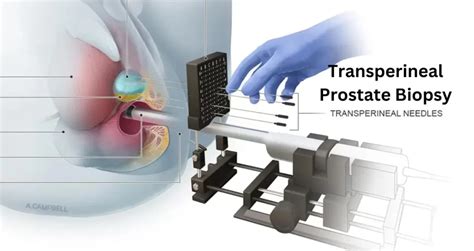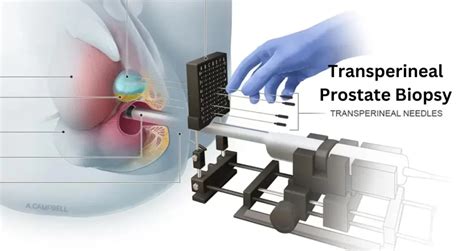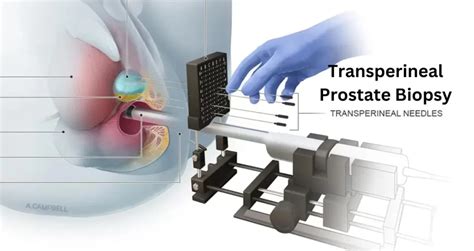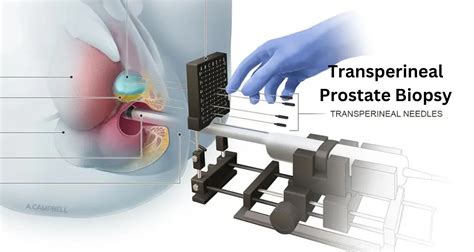Intro
Learn about the prostate biopsy procedure, including preparation, risks, and recovery. Understand prostate cancer diagnosis with MRI-guided biopsy, ultrasound, and PSA testing for accurate results.
The prostate biopsy procedure is a crucial diagnostic tool for detecting prostate cancer, which is one of the most common types of cancer affecting men worldwide. As men age, the risk of developing prostate cancer increases, making regular check-ups and screenings essential for early detection and treatment. A prostate biopsy involves removing a small sample of tissue from the prostate gland, which is then examined under a microscope for abnormal cell growth. This procedure can be a worrying experience for many men, but understanding what to expect can help alleviate anxiety and make the process more manageable.
Prostate cancer is often asymptomatic in its early stages, and a biopsy is usually recommended when a man's prostate-specific antigen (PSA) levels are elevated or if a doctor detects suspicious lumps during a digital rectal examination (DRE). The PSA test measures the level of PSA in the blood, which can be elevated in men with prostate cancer, prostatitis, or other non-cancerous conditions. While the PSA test is not foolproof, it can help identify men who may need further testing, such as a biopsy. With advancements in medical technology, the prostate biopsy procedure has become more refined, allowing for more accurate diagnoses and effective treatment plans.
The importance of a prostate biopsy lies in its ability to provide a definitive diagnosis of prostate cancer. By examining the tissue sample, doctors can determine the presence and aggressiveness of cancer cells, which helps guide treatment decisions. Early detection of prostate cancer significantly improves treatment outcomes, and a biopsy is a critical step in this process. As research continues to uncover new insights into the causes and risk factors of prostate cancer, the role of biopsies in diagnosis and treatment will remain vital. Understanding the procedure, its benefits, and potential risks can empower men to take an active role in their health and make informed decisions about their care.
Preparation for a Prostate Biopsy

Types of Prostate Biopsy
There are several types of prostate biopsy, including transrectal ultrasound (TRUS) biopsy, transperineal biopsy, and MRI-guided biopsy. The most common method is the TRUS biopsy, which involves inserting an ultrasound probe into the rectum to guide the biopsy needle into the prostate gland. This method allows for precise targeting of suspicious areas and is usually performed under local anesthesia. The transperineal biopsy involves inserting the needle through the perineum, the area between the anus and scrotum, and is often used for men who have had previous prostate surgery or have a high risk of complications. MRI-guided biopsies use magnetic resonance imaging to guide the biopsy needle, providing detailed images of the prostate gland and surrounding tissues.The Prostate Biopsy Procedure

Risks and Complications
While generally a safe procedure, prostate biopsy carries some risks and complications. The most common side effects include bleeding, pain, and urinary symptoms, such as difficulty urinating or blood in the urine. In rare cases, men may experience more serious complications, such as infection, urinary retention, or rectal bleeding. To minimize these risks, it's essential to follow the doctor's instructions carefully and report any symptoms or concerns promptly. Additionally, men should be aware of the potential for false-negative results, where cancer is present but not detected during the biopsy. In such cases, further testing or repeat biopsies may be necessary.After the Biopsy

Understanding Biopsy Results
Understanding the biopsy results is crucial for making informed decisions about treatment. The pathology report will indicate whether cancer is present, and if so, will provide information on the grade and stage of the cancer. The Gleason score is a grading system used to evaluate the aggressiveness of prostate cancer, with higher scores indicating more aggressive cancer. The stage of cancer refers to the extent of the cancer's spread, with earlier stages indicating more localized cancer. By understanding these factors, men can work with their doctor to develop an effective treatment plan that suits their individual needs and preferences.Living with Prostate Cancer

Coping with Emotional Challenges
Coping with the emotional challenges of prostate cancer can be daunting, but there are many resources available to support men and their loved ones. Support groups, counseling, and online forums can provide a safe space to share experiences, ask questions, and connect with others who are going through similar challenges. Additionally, men can benefit from learning relaxation techniques, such as deep breathing or progressive muscle relaxation, to manage anxiety and stress. By acknowledging the emotional impact of prostate cancer and seeking help when needed, men can navigate the challenges of their diagnosis with greater ease and confidence.Future Directions in Prostate Cancer Diagnosis

Emerging Technologies
Emerging technologies, such as artificial intelligence (AI) and machine learning (ML), are being explored for their potential to enhance prostate cancer diagnosis and treatment. AI-powered algorithms can analyze large datasets, including medical images and genomic information, to identify patterns and predict cancer risk. ML can help develop more accurate models for predicting treatment outcomes and identifying the most effective therapies for individual patients. While these technologies are still in their infancy, they hold great promise for revolutionizing the field of prostate cancer diagnosis and treatment.Conclusion and Next Steps

We invite you to share your thoughts, experiences, or questions about prostate biopsy and prostate cancer in the comments below. Your input can help others navigate their own journey and provide valuable insights for our community. Additionally, please consider sharing this article with others who may benefit from this information, and let's work together to raise awareness and promote education about prostate health.
What is a prostate biopsy, and why is it necessary?
+A prostate biopsy is a diagnostic procedure that involves removing a small sample of tissue from the prostate gland to examine for abnormal cell growth. It is necessary to detect prostate cancer, which is one of the most common types of cancer affecting men worldwide.
What are the risks and complications associated with a prostate biopsy?
+The risks and complications associated with a prostate biopsy include bleeding, pain, urinary symptoms, infection, and urinary retention. While generally a safe procedure, it's essential to follow the doctor's instructions carefully and report any symptoms or concerns promptly.
How long does it take to recover from a prostate biopsy, and what are the follow-up steps?
+Recovery from a prostate biopsy typically takes a few days to a week, during which time men may need to avoid heavy lifting, bending, or strenuous exercise. Follow-up steps include scheduling a follow-up appointment with the doctor to discuss the biopsy results and develop a treatment plan if cancer is detected.
